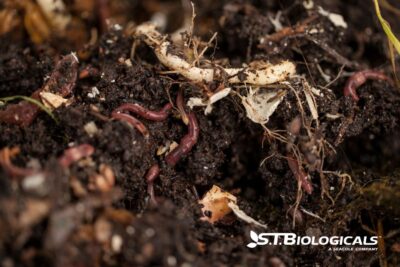Carbon-based agricultural nanotechnology enhances the plant microbiome, helping soil microorganisms communicate and cycle nutrients more efficiently for stronger, higher-yielding crops. By working with natural biological systems, nanotechnology supports sustainable farming practices that improve soil health, plant resilience, and profitability.
Biological diversity is critical for resilient, high-yielding crops. Maintaining the delicate balance of the environment and food production spells the difference between high crop yields and crop failure. Carbon-based ag nanotechnology gives a leg up to the microorganisms in the soil, encouraging biological activity and improving nutrient cycling to crops.
Let’s take a closer look at how ag nanotechnology can improve yields at your operation next growing season.
The Plant Microbiome
The plant microbiome is a living community that supports the growth, protection, and resilience of your crops. It includes all the microorganisms that live on all parts of the plant, from its leaves, flowers, and fruits to its stem and roots. These microbial communities change as the plant signals with exudates what it needs.
Microbial communities on a plant’s leaves and stems, for example, suppress harmful pathogens and improve disease resistance. The microbiome in the root zone help plants absorb water and nutrients such as nitrogen and phosphorus. In exchange for these benefits, the plant feeds its microbial communities with sugars and compounds called exudates.
How Ag Nanoparticles Interface with the Plant Microbiome
Ag nanoparticles help plants and the microbiome communicate more efficiently, optimizing nutrient cycling and improving plant health while encouraging the microbiome to grow.
Nanoparticles have unique surface properties that encourage biological activity. Wherever there are increased numbers of soil biota, there is greater nutrient cycling. Ag nanoparticles affect the biochemical and soil environments to increase nutrient mineralization. This effect is mediated by plant root exudates.
Nanoparticles have been shown to increase the capture of sugars, enzymes, and amino acids by root-associated microbial activity. It matters what kind of nanoparticle is used as a carrier, the crops treated, and the diversity of the microbial community.
Nanoparticles can be extremely beneficial in agriculture. Do your due diligence. Contact a crop consultant who is familiar with nanotechnology to guide you. Nanotechnology and sustainable farming practices can lead to better soil health, more diverse microbial populations, healthier crops, and more profitable food production.
Our team at ST Biologicals works with cutting-edge nanotechnology and sustainable ag practices to benefit our farmers and society. Contact us to start planning next season. We are here to help you succeed. When soil speaks, we listen.
Ag Nanotechnology FAQs
What is the plant microbiome?
The plant microbiome is the community of microorganisms living on and around plant leaves, stems, roots, flowers, and fruits that supports growth, disease resistance, and nutrient absorption.
How does nanotechnology interact with the plant microbiome?
Ag nanoparticles enhance communication between plants and microbes, improving nutrient cycling, root health, and overall plant vigor.
Why are carbon-based nanoparticles important for soil biology?
Carbon-based nanoparticles stimulate microbial activity, increase nutrient mineralization, and help beneficial microbes thrive in the soil environment.
Can nanotechnology improve crop yields sustainably?
Yes. When used alongside regenerative practices, ag nanotechnology boosts yields by improving soil structure, enhancing nutrient efficiency, and supporting a balanced, diverse microbial ecosystem.

